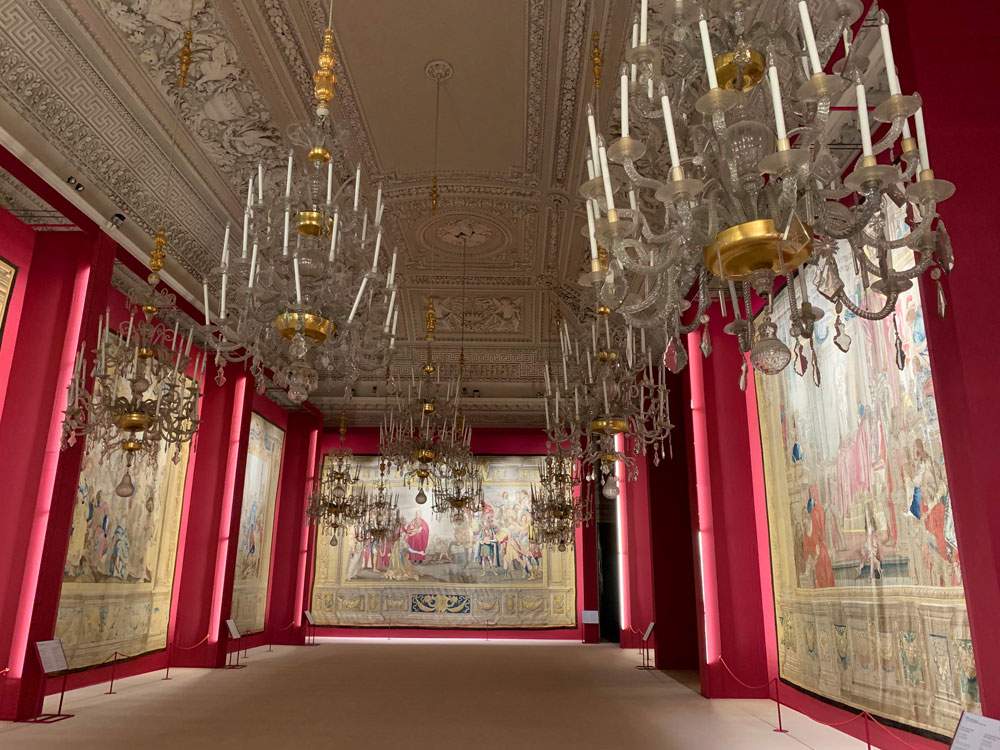Tapestries and Villano complete triptych of exhibitions dedicated to Cosimo I
The second and third exhibitions that are part of the triptych, along with One Hundred Lances for the Prince, dedicated to Grand Duke Cosimo I de’ Medici are open to the public from June 5 to September 29, 2019.
A Woven Biography. The seventeenth-century tapestries in honor of Cosimo I brings together in the Sala Bianca and Sala delle Nicchie of the Pitti Palace, large wool and silk tapestries, ranging in size from five meters to more than eight meters in length, that recount the most significant moments of Cosimo I’s rule: from his rise to power, to the consolidation of his rule over Tuscany, to the urban and architectural transformation of Florence, to his relations with the papal power and the creation of a chivalric order.
Originally conceived for the Hall of Saturn in the Pitti Palace, used for the Secret Hearings of Grand Duke Ferdinand II, they were designed by famous painters and executed in the manufactory created by the Duke. For this reason, the tapestries on display made between 1653 and 1668 are a double tribute to Ferdinand II and Cosimo I de’ Medici.
Anapotheosis of Medici power that on the occasion of this exhibition sees all eight tapestries brought together (the last two depicting episodes dedicated to relations with European monarchies are also being displayed today for completeness, despite the fact that only six were originally hung).
“To celebrate the fifth centenary of the birth of Cosimo I de’ Medici, an exhibition of tapestries is as appropriate as it could be: in fact, it was he who founded the Manufacture in 1545. In addition, the series of tapestries now on display offers us an encomiastic excursus on the figure and work of the sovereign, with a sequence of episodes that exalt the centrality of Cosimo’s role in the history of the Medici dynasty and the government of Tuscany,” said the director of the Uffizi Galleries, Eike Schmidt.
The exhibition is curated by Lucia Meoni and Alessandra Griffo.
Concluding the triptych is the exhibition of The First Statue for Boboli. The Restored Villano in the Sala delle Nicchie of Palazzo Pitti.
The statue, restored on the occasion of the exhibition, depicts the Villano with the Botticella and was made by 1557 by Giovanni di Paolo Fancelli based on a design by Baccio Bandinelli: it is the first in a successful series of statues depicting commoners filmed in their daily occupations.
Initially the Villano was displayed in a large nursery that served the Pitti Palace, the residence purchased in 1550 by Cosimo’s wife, Eleonora di Toledo; it was later moved to Pratolino and in the late 18th century brought back to Boboli, its last outdoor location, now replaced by a marble reproduction.
In the course of analysis on the work, the detail of a billhook used by peasants to prune the minor branches of plants emerged, restoring with rustic truth, even more incisive than the small barrel, the peasant nature of the figure. The completed restoration is intended to pay tribute to the ducal couple and offer a cue to visit these Cosimi places.
The exhibition is curated by Alessandra Griffo.
For info: www.uffizi.it
 |
| Tapestries and Villano complete triptych of exhibitions dedicated to Cosimo I |
Warning: the translation into English of the original Italian article was created using automatic tools. We undertake to review all articles, but we do not guarantee the total absence of inaccuracies in the translation due to the program. You can find the original by clicking on the ITA button. If you find any mistake,please contact us.



























